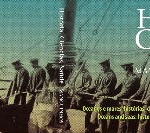|Equipe do blog HCS- Manguinhos
Between 1950 and 1960, organizations for reproductive health, such as The Pathfinder Fund, grew so concerned about rapid population growth in developing countries that they concluded that immediate interventions were the only practical and ethical way to get involved. This led, among other things, to a certain disregard for the laws and customs of the countries in which they worked.
In the article “Gambling on the Protestants: The Pathfinder Fund and Birth Control in Peru, 1958-1965”, recently published in the Bulletin of the History of Medicine (v. 88, n. 2, 2014), historian Raul Necochea Lopez analyses the work of The Pathfinder Fund in Peru and shows how its personnel collaborated with Protestant institutions.
Raul Necochea is also the author of the book A History of Family Planning in Twentieth Century Peru, (Chapel Hill: University of North Carolina Press, 2014). In this interview to the blog HCS-Manguinhos, the historian discusses the role of the many actors who have played a part shaping what family planning looks like in the country these days.
What is the novelty of your work?
In my case, the novelty is Peru, a country that had not yet benefitted from much attention in terms of family planning history. Peru is also a regional “star performer,” macro-economically speaking, yet makes slower improvements when it comes to social indicators, including maternal mortality rates and violence against women. To me, these are signs of injustice: clearly, some people are disproportionately benefitting from contemporary prosperity in my country, while others continue to struggle with basic things, such as staying healthy, trusting physicians, and finding birth control. I wrote the book because I was looking for a constructive way to channel my frustration, by understanding the historical roots of these inequalities.
The interest of Latin Americanists in family planning history is also novel, and yet, there are already a few very fine books out there. Off the top of my head I can think of those by Gabriela Soto Laveaga on Mexico, Jadwiga Pieper Mooney and Soledad Zárate on Chile, Fabiola Rohden on Brazil, and Karina Fellitti on Argentina. Twenty years ago, the people dealing with these questions would have likely been gynecologists, demographers, or policy specialists. That is no longer the case. Historians are not only interested in official responses to matters of rapid population growth in the 1960s in our region, for example, even though that is the theme that government or clinical experts emphasized when they discussed family planning all the way into the 1980s. Although historians have paid attention to those dimensions, we have also brought up new ones: technological changes in birth control, the interplay between domestic and foreign interests, and the role of the users of family planning as well, to name a few.
I wanted my book, A History of Family Planning in Twentieth Century Peru, to do justice to the many actors who have played a part on shaping what family planning looks like in the country these days. Hence the structure of the book as a series of interrelated characters: medical elites, feminist movements, women and men who sought contraception and abortions, local and foreign organizations that promoted family planning, the Peruvian government, and the Catholic Church. I present these characters in all of my work in this field as enmeshed in both local and international networks, and as having an interest in reproductive and sexual health long before the 1960s.
Why was family planning important to US foreign policy?
US foreign policy changed radically in the mid-1960s, under President Lyndon Johnson. The Department of State, especially through the US Agency for International Development, started to direct large amounts of funding to train health workers in contraceptive methods, to assist governments in their efforts to set up population policies and programs, and to purchase birth control devices and drugs. Developing countries were the main recipients of this kind of technical and financial aid. Family planning became important to US foreign policy partly as a defensive strategy. Too many people living in poverty spelled potential political volatility at a time, the Cold War, when the US government valued political and economic stability and tried very hard to prevent Communist inroads in Latin America.
While there is some truth to this argument, it is not the whole story. For one, it overestimates the ability of US foreign policy to have an impact on Latin American cultural and political institutions, as if the latter would easily bend to every whim and decision of the USAID. It also underestimates the roles and preferences of our own local actors: physicians, government planners, and birth control users also shaped the history of family planning in Latin America, not always in the most constructive ways. The forced sterilization scandal in Peru in the late 1990s, for example, is evidence of the enduring power of these local actors.
Was the church a monolithic institution in family planning?
What a great question! No, it was not. Throughout the 20th century, some in the Peruvian clergy have been more open than others to the possibility of family planning. The concept of “responsible parenthood” nicely encapsulates the Catholic idea that providing love, moral guidance, and material welfare is essential to raising children. The corollary of this concept is that having more children than one can love, guide, and provide for is not only irresponsible, but also sinful.
The Church applied these teachings when modern contraceptives (intra-uterine devices, the pill, etc.) became popular in the 1960s, and it turned them into a powerful critique of social inequalities: why, it asked, for example, is it that the wealthy have every opportunity to choose the number of their offspring, while the poor have such little choice in the matter? Or why is it that women bear disproportionate health and financial burdens as parents?
The attitude of the Catholic Church in Peru has shifted nowadays. I don’t see much of the old openness to debating how family planning can be a tool to address social inequality. In that sense, you might be tempted to say that the Church has indeed become a monolithic institution. But, knowing the priests, nuns, and lay Catholics I know, I remain optimistic that they are just laying low for a while. I wish I could draw them out a little.
What are the differences and similarities between your article and your book recently published?
My article, “Gambling on the Protestants: The Pathfinder Fund and Birth Control in Peru, 1958-1965,” was recently published in the Bulletin of the History of Medicine (volume 88, number 2, 2014). It is part of my program of research in family planning history, and it deals primarily with the emergence of a certain style of providing family planning assistance by US organizations, prior to the development of an interest in family planning on the part of the US government. Organizations such as The Pathfinder Fund, and birth control entrepreneurs such as its founder, Clarence Gamble, were so concerned about rapid population growth in developing countries that they concluded that rapid intervention was the only politically and morally correct way to get involved. This meant using birth control technologies without paying much attention to clinical follow-up, and a certain disregard for the laws and customs of the countries in which they worked.
One interesting difference with my book is that, in order to get these rapid interventions off the ground, The Pathfinder Fund had to rely on ready-made allies, instead of courting them slowly over time. The allies, in this case, turned out to be in the Protestant churches of Peru, which gave me the opportunity to understand a bit more how Protestants in Peru viewed the problem of rapid demographic growth. You’ll have to tell me if you think I did them justice!
Related articles in Spanish:
Felitti, Karina. Parirás sin dolor: poder médico, género y política en las nuevas formas de atención del parto en la Argentina (1960-1980). Hist. cienc. saude-Manguinhos, Dic 2011, vol.18, suppl.1, p.113-129. ISSN 0104-5970
Carrillo, Ana María. Economía, política y salud pública en el México porfiriano (1876-1910). Hist. cienc. saude-Manguinhos, 2002, vol.9, p.67-87. ISSN 0104-5970
Contreras, Carlos and Cueto, Marcos. Caminos, ciencia y Estado en el Perú, 1850-1930. Hist. cienc. saude-Manguinhos, Set 2008, vol.15, no.3, p.635-655. ISSN 0104-5970
Lossio, Jorge. British medicine in the Peruvian Andes: the travels of Archibald Smith M.D. (1820-1870). Hist. cienc. saude-Manguinhos, Dec 2006, vol.13, no.4, p.833-850. ISSN 0104-5970
Cueto, Marcos. El rastro del SIDA en el Perú. Hist. cienc. saude-Manguinhos, 2002, vol.9, p.17-40. ISSN 0104-5970













